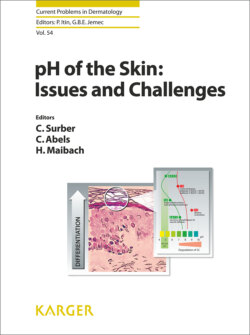Читать книгу pH of the Skin: Issues and Challenges - Группа авторов - Страница 44
На сайте Литреса книга снята с продажи.
Measurement Protocol
ОглавлениеThe purpose of this protocol is to provide guidelines for the reproducible measurement of skin surface pH with consideration of minimising the effect of endogenous (physiological), exogenous, environmental and instrumentation factors. Many of these guidelines are contained in the European Group on Efficacy Measurement of Cosmetics and Other Topical Products guidance for the in vivo assessment of skin surface pH [2] and two guidelines for the in vivo assessment of pH in non-clinical settings [7, 12]. Despite the latter proposing measurement of skin surface pH in non-clinical settings, such as workplaces, most of the guidelines provided are applicable to all measurements of skin surface pH.
For any health-related research involving human subjects, national and institutional research ethics requirements should be kept in mind and adhered to, if applicable. For ethics approval, the social and clinical value of the study, scientific validity, fair selection of subjects/participants and a favorable risk-benefit ratio should be justified. Furthermore, participants should provide informed consent for participation and potential and enrolled participants should be treated with respect [22].
After informed consent is obtained, precise instructions should be communicated regarding acceptable skin-washing practices (using soaps), the use of topical products such as cosmetics and lotions and occlusion of measurement positions (some of which may even be considered part of the exclusion criteria for participation). It is recommended to avoid skin washing with water 2–3 h prior to measurement and up to 10 h when alkaline soaps are used [2]. If possible, measurements should be made 12 h after use of ointments, body lotions and other topical products are applied to the measurement area [23].
